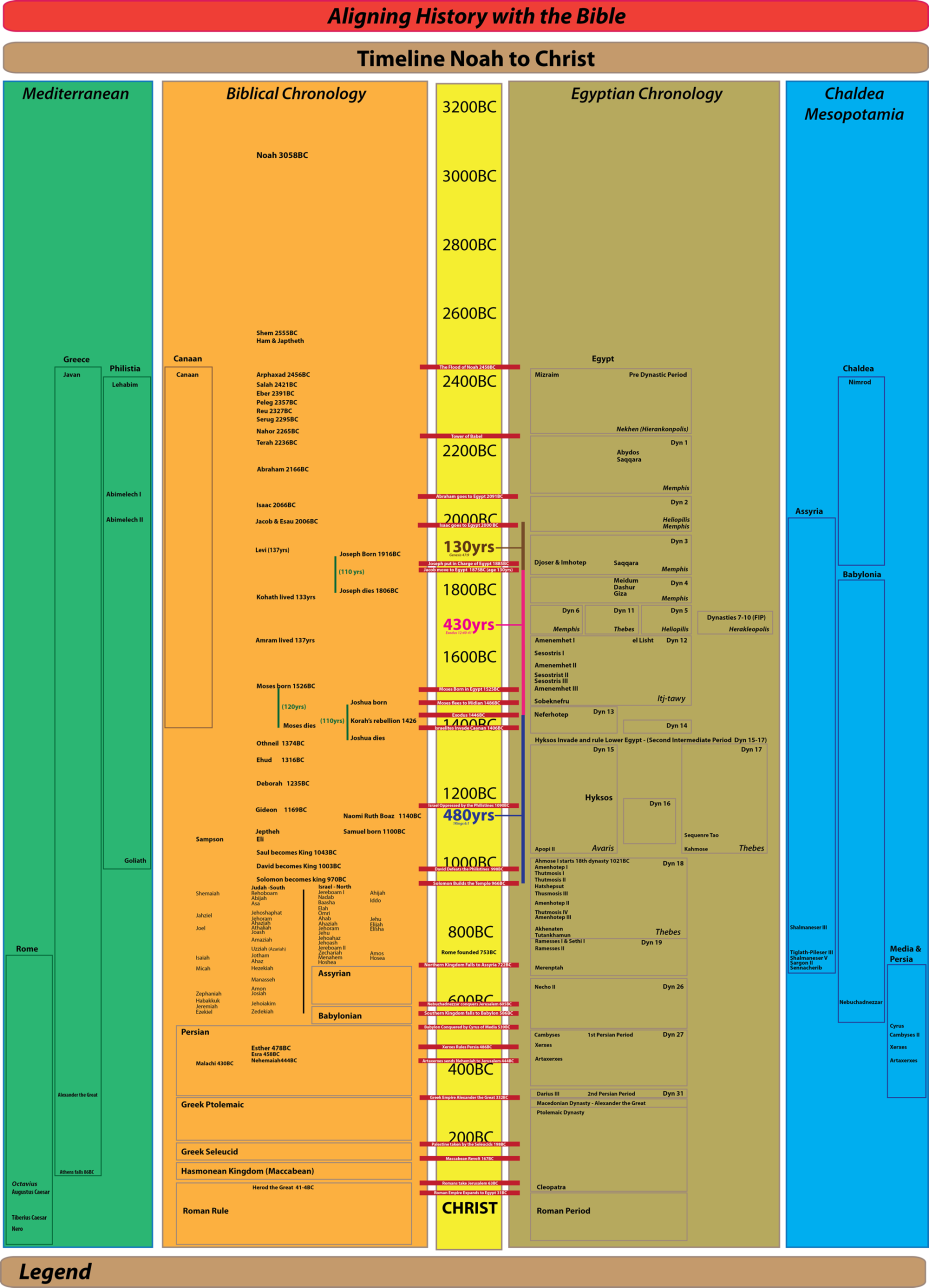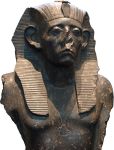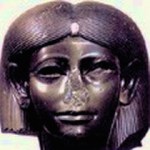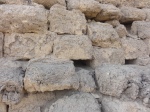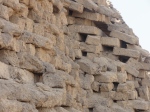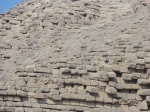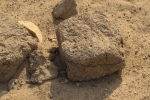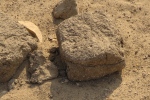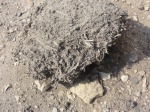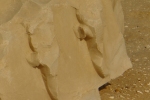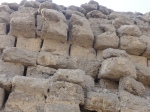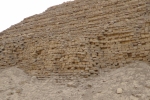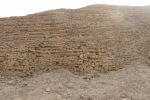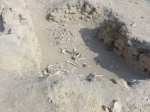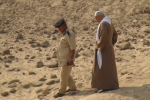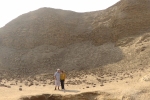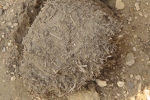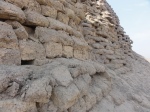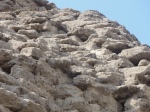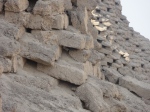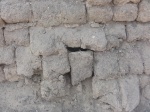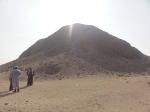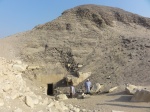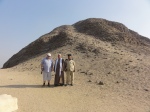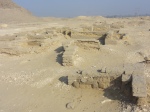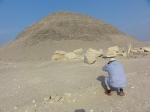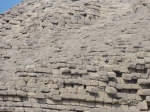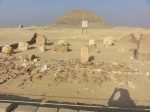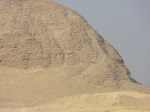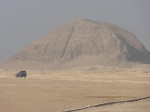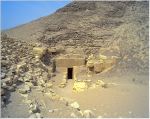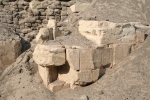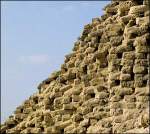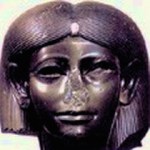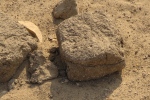Posts Tagged With: Hebrews
History aligned with the Bible
Could Moses have been born during the 12th dynasty of Egypt?
The Israelites had grown to number around 2 million by the end of the 12th dynasty when Moses was born.
Joseph (Imhotep) had long since died and the Pharaohs of the 12th dynasty had forgotten his connection to the Israelites. Joseph / Imhotep had looked after his family and ensured that they were able to multiply to become a great nation. Joseph died at the age of 110 years; 80 years after coming to Egypt.
The Israelites were in Egypt for 430 years by the time of the Exodus.
The Israelites had become so numerous by the start of the 12th dynasty that the Egyptians were beginning to feel threatened.
Amenmhet I (the first pharaoh of the 12th dynasty), was the vizier of Mentuhotep IV (the last pharaoh of the 11th dynasty) whom he may have assasinated.
The pharaohs of the 12th dynasty required a large slave labour force for the construction of their pyramids and other public works. The Jews were given the task of making mud bricks and working in the fields. The 12th dynasty lasted almost 200 years and at least seven pyramids were constructed during this time.
A semitic slave village at Kahun was built during the time of Sesostris II and occupied up until the time of the Exodus when Neferhotep I was reigning. We know this because scarabs of these pharaohs were found in the town.
The pyramids of the 12th dynasty had a core of mudbricks and a limestone veneer. The cores of each of these pyramids contained millions of mudbricks. Mudbricks were also used for other structures such as the Labyrinth which was built by Amenemhet III, the 6th pharaoh of the 12th dynasty.
Amenemhet III reigned for 46 yrs but had a 20 year co-regency with his father Sesostris III at the beginning of his reign. Moses was born early in the reign of Amenemhet III. It was Amenemhet III who tried to kill the male Israelite babies at birth. It was his daughter Sobekneferu who found Moses in a basket among the reeds of the Nile and adopted him and raised him as her own. Moses was groomed to be the next pharaoh Amenemhet IV and may have even been co-regent with Amenemhet III for 9 years (as Amenemhet IV). He never got to rule by himself. When his affections for the Israelites became known, Moses (alias Amenemhet IV) had to go into exile in Midian or be killed by Amenemhet III.
This not only fits well with historical records and the archaeological evidence, it allows complete synchrony of the Bible with the Egyptian Chronology.
The Pyramids were not made by ‘Aliens’ from another planet. The Israelites, however, were aliens to Egypt and did help make mud bricks for the 12th dynasty pyramids.
Pharaohs of the Israelite Oppression
The period when the Israelites were oppressed in Egypt corresponds to the 12th dynasty of Egypt.
The pharaohs of the 12th dynasty required a large slave labour force for the construction of their pyramids and other public works.
The Pyramids of the 12th dynasty, unlike those of earlier dynasties, were made almost entirely of mud bricks which were finished with a limestone veneer. Over the centuries, the limestone veneer has fallen away due to erosion, earthquakes and pilfering. What remains is the inner cores of the pyramids which contain millions of mud bricks.
The Israelites were given the task of making these mud bricks and working in the fields. The 12th dynasty lasted almost 200 years and at least seven pyramids were constructed during this time.
The Hebrew Oppression probably began with Amenemhet I, the first pharaoh of the 12th dynasty. By the time of Sesostris II, a workers villages had been built to house the slaves working on the pyramids at Hawara and Dashur. These villages were occupied up until the time of the Neferhotep I when the exodus occurred.
The pharaohs of the oppression therefore included: Amenemhet I, Sesostris I, Sesostris II, Amenemhet II, Sesostris III, Amenemhet III, Sobekneferu and the 13th dynasty pharaohs from Sobekhotep I to Neferhotep I.
Of note was Amenemhet III who was the 6th pharaoh of the 12th dynasty. He reigned for 46 yrs but had a 20 year co-regency with his father Sesostris III at the beginning of his reign.Moses was born early in the reign of Amenemhet III. It was Amenemhet III who tried to kill the male Israelite babies at birth. It was his daughter Sobekneferu who found Moses in a basket among the reeds of the Nile and adopted him and raised him as her own. Moses was groomed to be the next pharaoh Amenemhet IV and may have even been co-regent withAmenemhet III for 9 years (as Amenemhet IV). Moses never got to rule by himself. When his affections for the Israelites became known, Moses (alias Amenemhet IV) had to go into exile in Midian or be killed by Amenemhet III.
Pharaohs during the time of Moses’ Exile
Moses (Amenemhet IV) was in exile in Midian for the last few years of Amenemhet III‘s reign and during the reign of Sobekneferu.Exodus 2:23-25
Moses remained in exile for much of the 13th dynasty from the reign of Sobekhotep I to Neferhotep I.
Pharaoh of the Exodus
Neferhotep I was one of the last Pharaohs of the 13th Dynasty. He reigned for 11 years according to the Turin King List; longer than any other Pharaoh of that dynasty. Neferhotep Iwas succeeded by his brother Sobekhotep IV rather than his son Haankhef[4] (Wahneferhotep).[5] He was probably the ‘Pharaoh of the Exodus’. The Pharaoh that refused to ‘let the Israelites go’. Moses (at the age of 80 years) and Aaron (aged 83 years) would have contronted Neferhotep in 1446BC which is when the Exodus occurred. Neferhotep I‘s mummy has never been found because he drowned in the Red Sea when pursuing the Israelites who were leaving Egypt (the Exodus). The semitic slave villages of Kahun and Tel ed-Dabawere occupied up until the time of Neferhotep I. Scarabs of the 12th and 13th dynasty pharaohs from Sesostris II up until Neferhotep I were found by Flinders Petrie at Kahunindicating that it was Neferhotep I who was reigning when the Exodus occurred.[6] These towns were suddenly evacuated near the end of the 13th dynasty.
Pharaohs when Israel was in the Wilderness
Neferhotep I was succeeded by his brother Sobekhotep IV rather than his son Haankhef[4] (Wahneferhotep).[5]
A 14th dynasty started but did not last long.
The Hyksos saw their chance to become established in the region and so they built a fort at Avaris on Egypt’s border.
From Avaris, they gradually began to occupy and take over Lower Egypt (The 15th dynasty) where they demanded tribute from the Nomarchs of the North and the South (The 16th dynasty in ?Lower Egypt and 17th dynasty in Upper Egypt).
Pharaohs during the time of the Judges in the Promised Land
Moses (Amenemhet IV) never got to enter the Promised Land. Moses only saw it from a distance.
The Israelites spent 40 years in the Wilderness before Joshua lead them into the Promised land (Canaan). Israel was then ruled by Judges for the next 360 years. This corresponds to Egypt’s Second Intermediate Period.
The Hyksos (Amalekites) took over and ruled Lower Egypt (15th dynasty) for much of the Second Intermediate Period.
Upper Egypt was governed by the Pharaohs of the 17th dynasty although the Hyksos kings who were based in Avaris in Lower Egypt made them pay homage. The second last Pharaoh of the 17th dynasty Seqenenre was actually arrested and taken to Avaris by Apopi II (Agag) where he died.
This provolked Kahmose, the last pharaoh of the 17th dynasty in Upper Egypt (also the son of Seqenenre) to lead a rebellion against the Hyksos (Amalekites). Eventually, the Hyksos(Amalekites) were defeated and forced to leave Egypt where they encountered Saul of Israel who virtually wiped them out. Their king Apopi II (Agag) was captured alive and taken to Samuel who put him to death.
Pharaohs during the time of the Kings when Israel was united
Ahmose I, the brother of Kahmose and son of Seqenenre became the first Pharaoh of Egypt’s New Kingdom (18th dynasty) at a time when King Saul of Israel was on the throne.
Summary
| The Israelites | Moses | Pharaohs |
|---|---|---|
| Oppression | Moses raised by Sobeknefru in Pharaoh’s household until 40 years old during the reign of Amenemhet III. Moses co-reigns with Amenemhet III for 9 years as Amenemhet IV during this time | Amenemhet I, Sesostris I, Sesostris II, Amenemhet II, Sesostris III, Amenemhet III. (12th dynasty) |
| Waiting | Moses (Amenemhet IV) flees to Midian where he lives with Jethro for 40 years | Amenemhet III, Sobekneferu (12th dynasty) Sobekhotep I to Neferhotep I (13th dynasty) |
| Exodus | Moses becomes the leader of the Jews and Aaron their spokesman | Neferhotep I (13th dynasty) |
| Wilderness | Moses leads the Israelites in the Wilderness for 40 years. During this time, Moses receives the Law on Mt Sinai, sets up the Sanctuary and positions the Israelites to take the Promised Land | Sobekhotep IV (13th dynasty)14th dynasty |
| Canaan | Moses dies on Mt Nebo in Moab just before the Israelites invade Canaan (The Promised Land). Israel is ruled by ‘Judges’ | Hyksos (15th dynasty) |
Moses was born in 1526BC – between the 3rd and 6th year of the reign of Amenemhet III when he was co-regent with Sesostris III.
Amenemhet III – Amenemhat III – Nimaatre was considered by some to be the greatest pharaoh of the Middle Kingdom. He was the 6th Pharaoh of the 12th dynasty. He reigned for 46 years over Upper and Lower Egypt, Elephantine and Lower Nubia. He may have had a long co-regency (of 20 years) with his father, Sesostris III. The Hebrews / Jews / Israelites were in Egypt at this time and the pharaohs of the 12th dynasty had enslaved them and forced them to work the fields and make mudbricks for the inner core of their pyramids and other public works. Moses was born to the Hebrew slave Jochebed about 4-6 years into Amenemhet III’s reign (approximately 1526BC). Sesostris III was co-reigning with Amenemhet III at the time Moses was born. It was either Sesostris III or Amenemhet III who ordered the Egyptian midwives to drown the Hebrew babies if they were male. Moses was left in a basket in the Nile to be found by the Princess Sobeknefru. Moses was adopted and raised by Sobeknefru who was childless. She raised Moses as her own son in pharaoh’s household. She would have been grooming Moses to be the next pharaoh (Amenemhet IV). Towards the end of Amenemhet III’s reign, he had a co-regency with Amenemhet IV lasting 9 years. (The revised dates of Amenemhet IV’s co-reign: approximately 1495-1986BC) When Moses (Amenemhet IV) was 40 years old, he killed an Egyptian official for beating a Hebrew slave, revealing his loyalties to the Hebrews. As a consequence, Moses / Amenemhet IV was not suitable to be an Egyptian Pharaoh and had to fee from Amenemhet III once this became known to the pharaoh. This left Amenemhet III with no male heir to the throne. When Amenemhet III died a few years later, his daughter Sobekneferu succeeded him to become the last pharaoh of the 12th dynasty. The revised dates of Amenemhet III’s reign: 1530-1484BC (approximately).
- Amenemhet III – 6th Pharaoh of the 12th Dynasty – The Pharaoh whom Moses fled from. When Moses was 40 yrs old. He had to flee to Midian after killing an Egptian official.
- Sesostris III – (The father of Amenemhet III)
- The Princess who found baby Moses in a basket amongst the reids of the Nile. Her father Amenemhet III had directed the Egyptian midwives to kill all Hebrew children, She adopted Moses and raised him as an Egyptian.
- Sobeknefru – The Daughter of Amenemhet III. The Princess who found baby Moses in a basket amongst the reids of the Nile. Her father Amenemhet III had directed the Egyptian midwives to kill all Hebrew children. As she had no children of her own, she adopted Moses and raised him as an Egyptian. When Moses fled to Egypt, there was nobody to inherit the throne. Sobeknefru became the Queen of Egypt after Amenemhet II died. She ruled for up to 8 years. When she died the 12th dynasty Ended.
- Amenemhet IV, the boy Sobeknefru adopted – Could this be Moses?
- The 12th dynasty Amenemhet III pyramid at Hawara. The limestone venere has fallen away over the centuries exposing the inner core composed of millions of mudbricks.
- Mud bricks in the Ameenhet III pyramid at Hawara. This was the last great pyramid to be built.
- The entrance to the Amenemhet III pyramid at Hawara. The pyramids of the 12th dynasty had an inner core made from mudbricks and an outer veneer made of limestone. Over the centuries, the outer limestone veneer has fallen away revealing the inner core which was made of mud bricks. The mudbricks are likely to have been made by Israelite slaves who were in Egypt at the time. After the Exodus of the Israelites in the 13th dynasty (Neferhotep), no more large pyramids were constructed. Petrie found a workers village at Kahun in 1890.
- The Amenemhet III pyramid at Hawara showing the mudbricks of the inner core, the limestone blocks that were part of the external venere and the considerable erosion that has occured over the centuries. This was the last of the Great Pyramids of Egypt. The Israelites were slaves in Israel during the 12th dynasty when this pyramid was made. Moses was brought up by Amenemhet III. It is quite likely that the millions of mudbricks that went into building this pyramid were made by the Israelites. When the exodus occured, there was not enough slave labour to make pyramids anymore and so the pyramid age ended.
- The inner core of Amenemhet III’s pyramid at Hawara
- Sobeknefru. Daughter of Amenemhet III, Foster mother of Moses. Last Pharaoh of the 12th dynasty of Egypt.
An ancient historian by the name of Josephus records that the Israelites were given the task of building pyramids.
The Works of Josephus
Antiquities of the Jews – Book II
CONTAINING THE INTERVAL OF TWO HUNDRED AND TWENTY YEARS.
FROM THE DEATH OF ISAAC TO THE EXODUS OUT OF EGYPT.
CHAPTER 9.
CONCERNING THE AFFLICTIONS THAT BEFELL THE HEBREWS IN EGYPT, DURING FOUR HUNDRED YEARS. (16)
1. NOW it happened that the Egyptians grew delicate and lazy, as to pains-taking, and gave themselves up to other pleasures, and in particular to the love of gain. They also became very ill-affected towards the Hebrews, as touched with envy at their prosperity; for when they saw how the nation of the Israelites flourished, and were become eminent already in plenty of wealth, which they had acquired by their virtue and natural love of labor, they thought their increase was to their own detriment. And having, in length of time, forgotten the benefits they had received from Joseph, particularly the crown being now come into another family, they became very abusive to the Israelites, and contrived many ways of afflicting them; for they enjoined them to cut a great number of channels for the river, and to build walls for their cities and ramparts, that they might restrain the river, and hinder its waters from stagnating, upon its running over its own banks: they set them also to build pyramids, (17) and by all this wore them out; and forced them to learn all sorts of mechanical arts, and to accustom themselves to hard labor. And four hundred years did they spend under these afflictions; for they strove one against the other which should get the mastery, the Egyptians desiring to destroy the Israelites by these labors, and the Israelites desiring to hold out to the end under them.
(16) As to the affliction of Abraham’s posterity for 400 years, see Antiq. B. I. ch. 10. sect. 3; and as to what cities they built in Egypt, under Pharaoh Sesostris. and of Pharaoh Sesostris’s drowning in the Red Sea, see Essay on the Old Testament, Append. p. 132-162.
(17) Of this building of the pyramids of Egypt by the Israelites, see Perizonius Orig. Aegyptiac, ch. 21. It is not impossible they might build one or more of the small ones; but the larger ones seem much later. Only, if they be all built of stone, this does not so well agree with the Israelites’ labors, which are said to have been in brick, and not in stone, as Mr. Sandys observes in his Travels. p. 127, 128.
The Pharaohs (of the 12th dynasty) oppressed the Israelites and forced them to make mud bricks reinforced with straw.
Bricks Without Straw1Afterward Moses and Aaron went to Pharaoh and said, “This is what the Lord, the God of Israel, says: ‘Let my people go, so that they may hold a festival to me in the desert.’”2Pharaoh said, “Who is the Lord, that I should obey him and let Israel go? I do not know the Lord and I will not let Israel go.”3Then they said, “The God of the Hebrews has met with us. Now let us take a three-day journey into the desert to offer sacrifices to the Lord our God, or he may strike us with plagues or with the sword.”4But the king of Egypt said, “Moses and Aaron, why are you taking the people away from their labor? Get back to your work!” 5Then Pharaoh said, “Look, the people of the land are now numerous, and you are stopping them from working.”6That same day Pharaoh gave this order to the slave drivers and foremen in charge of the people: 7“You are no longer to supply the people with straw for making bricks; let them go and gather their own straw. 8But require them to make the same number of bricks as before; don’t reduce the quota. They are lazy; that is why they are crying out, ‘Let us go and sacrifice to our God.’ 9Make the work harder for the men so that they keep working and pay no attention to lies.”10Then the slave drivers and the foremen went out and said to the people, “This is what Pharaoh says: ‘I will not give you any more straw. 11Go and get your own straw wherever you can find it, but your work will not be reduced at all.’” 12So the people scattered all over Egypt to gather stubble to use for straw. 13The slave drivers kept pressing them, saying, “Complete the work required of you for each day, just as when you had straw.” 14The Israelite foremen appointed by Pharaoh’s slave drivers were beaten and were asked, “Why didn’t you meet your quota of bricks yesterday or today, as before?”15Then the Israelite foremen went and appealed to Pharaoh: “Why have you treated your servants this way? 16Your servants are given no straw, yet we are told, ‘Make bricks!’ Your servants are being beaten, but the fault is with your own people.”17Pharaoh said, “Lazy, that’s what you are—lazy! That is why you keep saying, ‘Let us go and sacrifice to the Lord.’ 18Now get to work. You will not be given any straw, yet you must produce your full quota of bricks.”19The Israelite foremen realized they were in trouble when they were told, “You are not to reduce the number of bricks required of you for each day.” 20When they left Pharaoh, they found Moses and Aaron waiting to meet them, 21and they said, “May the Lord look upon you and judge you! You have made us a stench to Pharaoh and his officials and have put a sword in their hand to kill us.” |
|||

